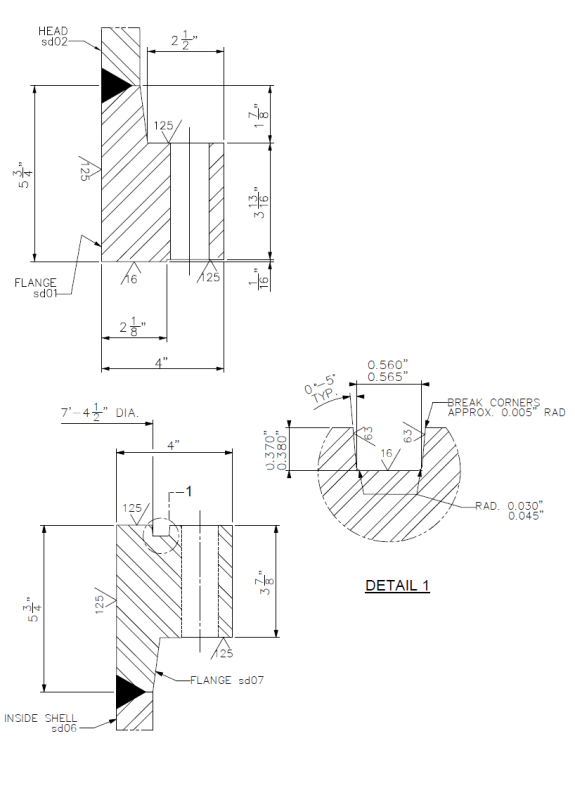TylerM
Mechanical
- Feb 16, 2017
- 32
I have a flange I’m looking at and the top half of it is a flat face flange while the bottom half is a ring joint flange (ring depth is 0.3”). The type of gasket the engineer is using is an elastomer with less than 75A shore Durometer with dimensions of: Gasket height=1.0” Gasket thickness=0.5” (So it’s taller than it is thick, much like a ring joint gasket). He’s designing it for the rubber-like gasket to go into the ring joint 0.3” then crush roughly the other 0.7”. Note that this is only a 300 psi system and operates at room temperature.
Has anyone in all their years of experience seen something like this? Secondly, has anyone seen a flange configuration like this before Flat-to-ring joint?
Has anyone in all their years of experience seen something like this? Secondly, has anyone seen a flange configuration like this before Flat-to-ring joint?


